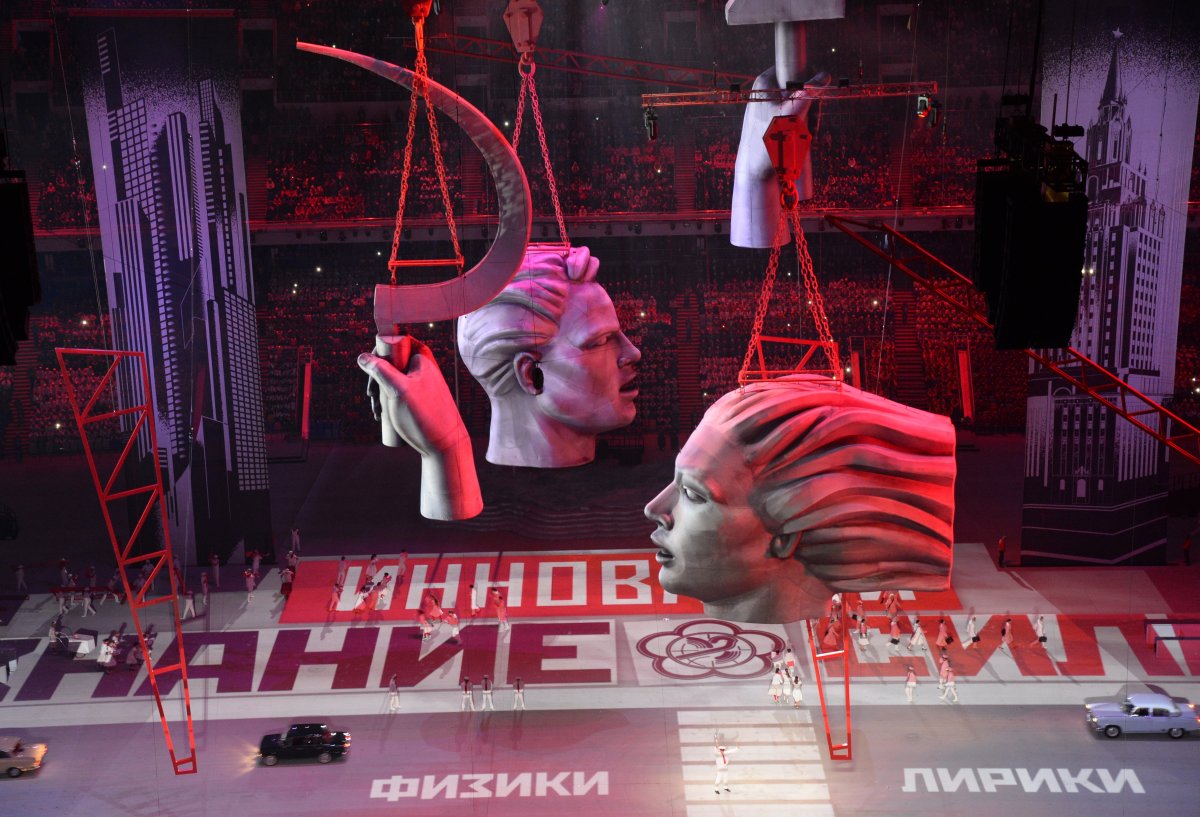TORONTO – Sochi’s opening ceremony was a cultural kaleidoscope of polarizing imagery.

Amid robot bears and Olympian technical glitches, symbols of the Russian Federation’s tumultuous political past were front and centre, including the infamous hammer and sickle.
But what does it all mean? Global News asked Matthew Light, an assistant professor at the Centre for European, Russian and Eurasian Studies at the University of Toronto to explain the ceremony’s symbolism in greater detail.
“It’s an attempt to integrate different parts of the Russian past in a compelling way,” said Light.
1. Hammer & Sickle/Crimson factory
“This first one is interesting because of the Soviet symbolism of the hammer and sickle. It’s very reminiscent of Soviet art,” said Light.
Light was surprised at the lack of reticence on Russia’s part for incorporating such politically-loaded imagery in the ceremony.
“It suggests Putin thinks that the Soviet past is nothing to be ashamed of.”
Man on a horse, floating castles
“This is a reference to the famous statue of Peter the Great in St. Petersburg,” says Light, who says that similar to their treatment of Soviet symbols, Russia is showing it is unashamed of its imperialistic past.
Light says the multi-coloured castles are archetypal examples of Russian architecture, and are likely meant to represent St. Basil’s Cathedral, the location of Russia’s parliament building, The Kremlin.
“These are different images that represent Russian history and culture.”
And finally… unknown significance
“I don’t know what those are. Maybe ballerinas?”












Comments